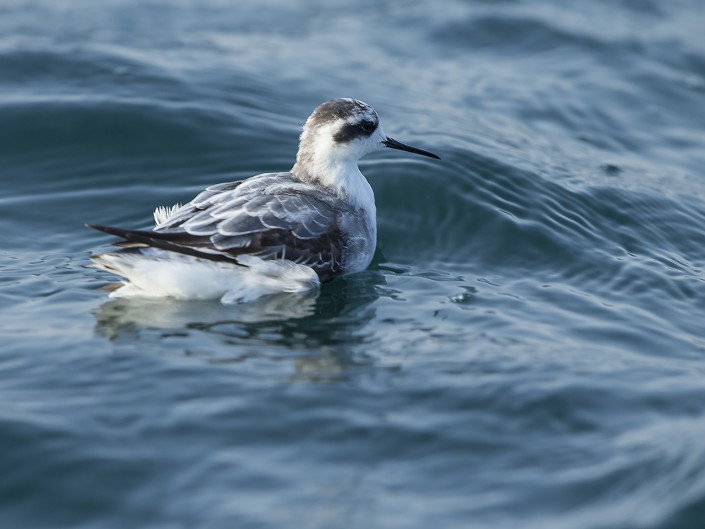This post is also available in: Swedish
Red-necked phalarope – Phalaropus lobatus
Red-necked phalarope – Phalaropus lobatus
The red-necked phalarope is about 18 cm (7.1 in) in length, with lobed toes and a straight, fine bill. The breeding female is predominantly dark grey above, with a chestnut neck and upper breast, black face and white throat. They have a white wing stripe which helps distinguish this bird from the similar Wilson’s phalarope. The breeding male is a duller version of the female. They have lobed toes to assist with their swimming. Young birds are grey and brown above, with buff underparts and a black patch through the eye. In winter, the plumage is essentially grey above and white below, but the black eyepatch is always present. They have a sharp call described as a whit or twit. The typical avian sex roles are reversed in the three phalarope species. Females are larger and more brightly coloured than males. The females pursue and fight over males, and will defend their mate from other females until the clutch is complete and the male begins incubation. The males perform all incubation and chick-rearing activities, while the females may attempt to find another mate. If a male loses his eggs to predation, he may re-pair with his original mate or a new female to try again. Once it becomes too late in the breeding season to start new nests, females begin their southward migration, leaving the males to incubate the eggs and look after the young.
The nest is a grass-lined depression at the top of a small mound. Clutch size is usually 4 splotchy olive-buff eggs, but can be fewer. Incubation is about 20 days. The young mainly feed themselves and are able to fly within 20 days of hatch.
The call sounds like this
Recording by Patrik Åberg from Xeno-canto

































































